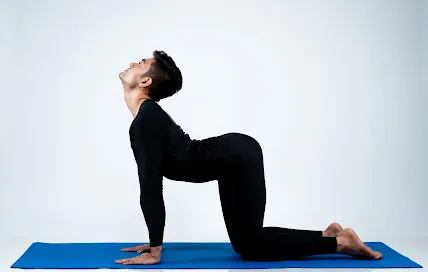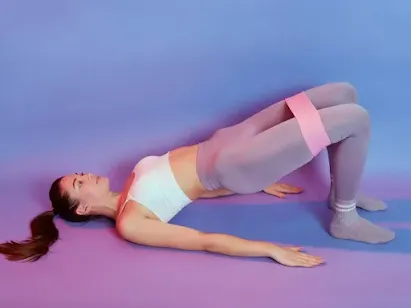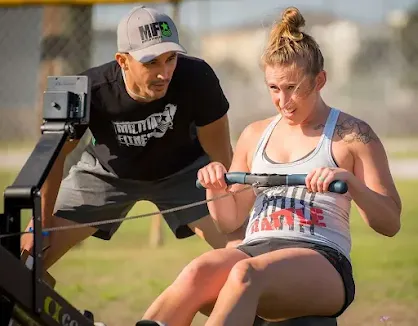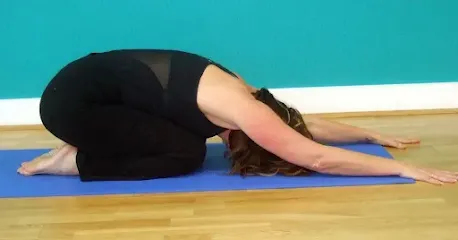The Best Exercises for Posture Correction: A
Complete Guide
Introduction
Proper posture is a part of the
overall health, but not everyone has it because of sedentary lifestyles,
sitting, and simply not exercising. Bad posture may cause backache, neck ache,
less lung capacity and stomach disorders. The silver lining is that your
posture can be fixed with the help of exercises, and long-term complications
may be avoided.
In this ultimate guide, we will
discuss the exercises that can help fix your posture, reasons why posture is
important, and how to make them a part of your life. These exercises will make
you look and feel taller no matter whether you are sitting at a desk, spending
a lot of time in a car, or just want to correct your posture.
Why Good Posture
Matters?
Now, before we get into the exercises,
let us see what is so important about posture:
1. Minimizes Pain - Bad posture causes back, neck and shoulder
pains as muscles and joints are put under strain.
2. Enhances Breathing - With good posture, your lungs can expand, and
hence there is better oxygen circulation.
3. Increases Self-confidence - Posture helps you look self-confident and
full of energy.
4. Improves Digestion - Slouching has the effect of compressing the
internal organs, good posture improves digestion.
5. Avoids Long - Term Damage- Bad posture can cause spinal
misalignment, herniated discs and arthritis in the long run.
So, what are the best exercises to fix
the posture?
Best Exercises
for Posture Correction
1. Chin Tucks
(Neck Alignment)
How to Do It:
·
Either sit or
stand erectly.
·
Tuck in your chin
into the chest but not tilting your head.
·
Keep it at 5
seconds, release.
·
Do ten times.
Benefits: Works neck muscles, reverses "forward
head posture" from prolonged phone and computer use.
2. Shoulder Blade
Squeezes (Upper Back Strengthening)
How to Do It:
·
Sit or stand with
arms to the sides.
·
Squeeze your
shoulder blades together as if holding a pen in between them.
·
Hold that for 5
seconds, and then release.
·
Do that 15 times.
Positives: Improves the upper back, helps avoid the
slouch.
3. Cat-Cow
Stretch (Spinal Flexibility)
How to Do It:
·
Come up on all
fours (hands and knees).
·
Breathe in, bend
your back (Cow Pose) and raise your head and tailbone.
·
Breathe out,
curve your back spine (Cat Pose), bring your chin and pelvis together.
·
Repeat this 1
minute.
Advantages: Enhances the movement of the spine and
relaxes the back region.
4. Wall Angels
(Thoracic Mobility)
How to Do It:
·
Place yourself
with your back toward a wall and your feet in a forward position.
·
Put your head,
shoulders and hips on the wall.
·
Bring your arms
in a W shape and move them up and down.
·
Make 10 times.
Advantages: Expands the chest, tones muscles of the upper
back and loosens shoulders.
Read Also: - How to Keep Kids Active: Best Exercises & Tips for Healthy Habits
5. Plank (Core
Strengthening)
How to Do It:
·
Hand position in
a push-up position, on forearms.
·
Maintain your
body straight from the head to the heels.
·
Hold for 20-60
secs.
Benefits: It works on strengthening the core which is
very essential for maintaining a good posture.
6. Superman
Exercise (Lower Back Strengthening)
How to Do It:
·
Get down to the
ground with your hands out in front of your body.
·
Push your arms,
chest and legs up from the ground at the same time.
·
Hold for 3
seconds and then lower.
·
Do that 12 times.
Benefits: Strengthens the lower back and glutes to
straighten up the back.
7. Chest Opener
Stretch (Pectoral Release)
How to Do It:
·
Hold onto a door
frame and place your forearms on it.
·
Take a step
forward a little until you feel a chest stretch.
·
Hold for 30 sec.
Benefits: Relaxes tight chest muscles from sitting down
all day long.
8. Glute Bridges
(Hip and Core Activation)
How to Do It:
·
Get into the back
support position, knees bent and feet flat.
·
Lift your hips up
to create a body straight line.
·
As you are at the
top of the movement, contract your glutes, and then slowly return to the
starting position.
·
Make 15
repetitions.
Benefits: Builds the glutes and core so that you can
avoid the anterior pelvic tilt.
9. Seated Rows
(Back Strengthening)
How to Do It
(Using Resistance Bands):
·
Sit down and
straighten the legs, put a band around your feet.
·
Tug on the band
and clench shoulder blades.
·
Gradually come
back and repeat 12 times.
Benefits: Tones the upper back, corrects the posture.
10. Child’s Pose
(Spinal Decompression)
How to Do It:
·
Kneel on ground,
sit on your heels.
·
Reach your arms
forward and bend your chest down to the ground.
·
Keep for 30 seconds.
Benefits: Helps to relieve tension in the spine and the
shoulders.
Additional Tips
for Better Posture
1. Ergonomic Workstation Designing - Set your chair, table and computer to eye
level.
2. Get frequent breaks - After every 30 minutes of sitting, stand and
stretch yourself.
3. Positioning of Sleep Matters - Sleep on a supportive pillow and do not sleep
on the stomach.
4. Firm Your Core - A good core will help you stand straight.
5. Be Phone Conscious - Do not keep your phone on the floor, look
down at it.
Conclusion
It will require time and consistency
to correct posture; however, these exercises will help you achieve great
improvements. Add at least 3-4 of these movements to your daily routine, and
you will find that you are less in pain, have more energy, and are more aligned
in general.
Just keep in mind that good posture is
not only a straight position, but it is a healthy and well-being over a long
time. Begin it now, and your body will reward you!
Did you like this guide? Send it to
your friends and family who can use better posture!
FAQs
Q: How long does
it take to get posture straight?
A: Severity dependent but with regular efforts
improvement can be seen in 4-8 weeks.
Q: Does yoga do
anything for posture?
A: Yes! Yoga helps to improve flexibility,
strength and body awareness that helps to correct posture.
Q: Can bad
posture be corrected?
A: No! It may take a bit longer for older people
to achieve, but posture can be improved by anyone.














Post a Comment
0Comments